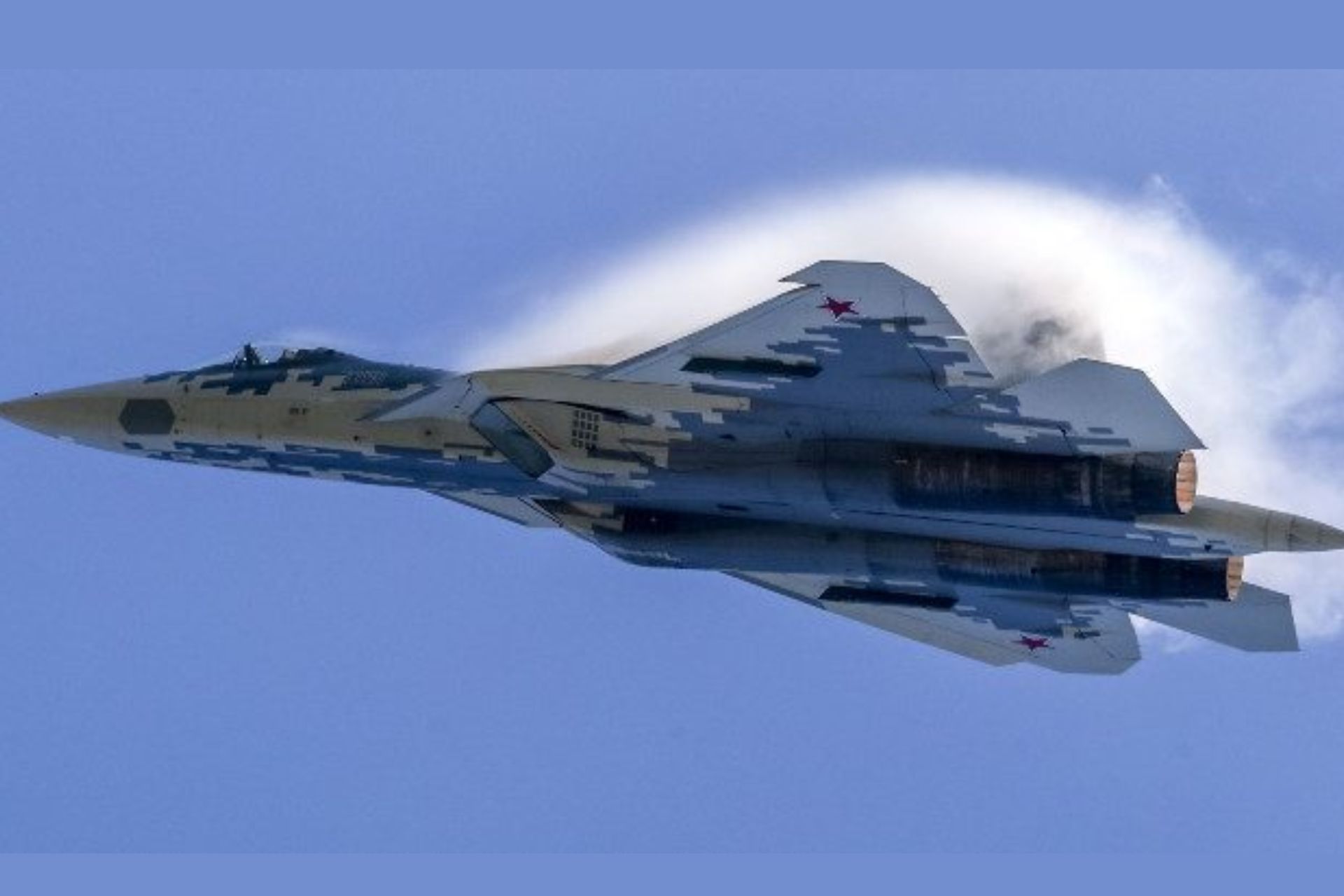Breaking News
Russia's Su-57 Felon: High-Stakes Gamble Between Combat and Export Strategy.
According to estimates from Western intelligence services, the Russian Aerospace Forces have used the Su-57 Felon in Ukraine, but in a limited role with little impact. Moscow is keeping the Su-57 off the battlefield to protect its international reputation, as Russia wants to sell the aircraft abroad. However, its role is real in Russian arms diplomacy.
Follow Army Recognition on Google News at this link

Promotion picture of SU-57 , Nato codename " FELON" massively spreaded by RT (Picture source: Youtube videos)
The Su-57 Felon
The Su-57 Felon is a twin-engine, multirole fighter jet, the latest from Russia. Like most new Russian weapons and munitions systems, the Su-57 is riddled with problems, and only a few aircraft are combat-ready. The Ukrainian army has also very likely destroyed a Su-57 on the ground.
Nevertheless, the Su-57 appears to be a capable aircraft. It can carry a combination of air-to-air and air-to-ground munitions, including R-73 infrared-guided air-to-air missiles and R-27 radar-guided air-to-air missiles, as well as cruise missiles, hypersonic munitions, glide bombs, rockets, and conventional bombs. It is also equipped with a 30 mm Gryazev-Shipunov GSh-30-1 cannon with 150 rounds for air combat or strafing runs. The aircraft has thrust-vectoring engines, giving it high maneuverability. Initial versions use the AL-41F1 engine, but the development of the new, more powerful and efficient Izdeliye 30 engine is underway.
By mid-2024, the Russian fleet of Su-57 Felon stealth fighters is growing but remains relatively small. The Russian Aerospace Forces are expected to have around 22 Su-57s in service by the end of 2024. This number includes early production aircraft and those currently under construction as part of a production ramp-up. The goal is to reach 76 Su-57s by 2028.
These aircraft have been increasingly deployed, particularly in operations related to the conflict in Ukraine, where they have been used for missile strikes. Despite these advances, the total number of operational Su-57s remains limited compared to other fighter jets in the Russian inventory.
There is much debate surrounding the stealth capabilities of the Su-57, which would largely determine whether the aircraft is on par with the latest American and Chinese fighter jets.
Although the Kremlin claims that the Su-57 Felon is a stealth fighter, it is likely an advanced 4.5-generation aircraft that cannot evade radar as effectively as the fifth-generation American F-22 Raptor or F-35 Lightning II fighters. Stealth is not an easy capability to define. A stealth aircraft, like the F-35 Lightning II, is much harder to detect by enemy radar and sensors. To achieve this, stealth aircraft use a combination of design, special paint coatings, and electronic countermeasures.

Su-57 accelerates and prepares to pass MACH 1, with the air beginning to form a cone around the aircraft during its test phases ( Picture source: Russian Aerospace forces)
International Interest in the Su-57 Felon?
Russia is one of the world's largest exporters of weapons systems and munitions. Before its full-scale invasion of Ukraine, the Kremlin could earn up to $15 billion a year by selling tanks, fighter jets, warships, missiles, armored personnel carriers, helicopters, infantry fighting vehicles, small arms, and ammunition to foreign countries. Its clientele mainly consists of countries in Africa and the Middle East, as well as India and China.
Although the Russian military is engaged in its most intense fighting since the end of World War II, the Kremlin continues to sell weapons systems abroad, earning between $5 billion and $8 billion annually.
As with most goods, marketing plays an important role in arms sales. Russian defense officials are well aware of this and are careful not to place their latest and potentially most lucrative products in a position that would diminish their value and marketability. Thus, weapons systems like the Su-57 Felon, the T-14 Armata main battle tank, and the S-500 Prometheus air defense system are absent from the fighting in Ukraine—Russian officials do not want them to be destroyed by Western weapons supplied to Ukraine.
In Conclusion:
Exporting this aircraft would help increase production rates, which are currently critical. It could possibly also lead to the launch of the Su-75, an aircraft designed for export and not for integration into the Russian armed forces, at least for now. But to export it, they need to avoid it being shot down by a wild F-16 or, worse, a ground-based anti-aircraft system.


























